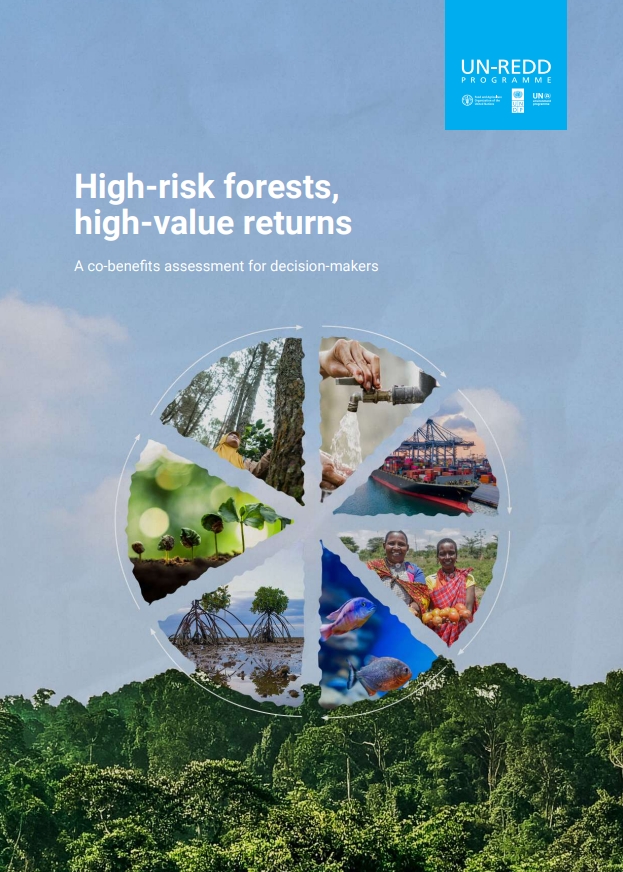High-risk forests, high-value returns: A co-benefits assessment for decision-makers
The report High-risk forests, high-value returns: A co-benefits assessment for decision-makers examines the global significance of conserving “high-risk forests” or tropical forests with high deforestation risk, covering about 391 million hectares.
It finds that these forests, while most at risk of being lost, are also among the most essential to people and the planet. Protecting them prevents major carbon emissions and delivers multiple co-benefits, including water and soil regulation, rainfall recycling, pollination, food security, and livelihoods for 25 million materially poor people who depend on fuelwood and non-timber products. Conservation of these forests also helps avoid an estimated US$81 billion in climate-related damages annually.
The report highlights that these ecosystem services are particularly critical for women and Indigenous Peoples, whose well-being and resilience are closely tied to forest resources. While acknowledging potential trade-offs with agriculture and timber use, it emphasizes that integrating development and protection can maximize shared benefits. By combining spatial data on forest value and deforestation risk, the report offers policymakers, investors, and governments practical guidance to direct finance and action where it delivers the greatest climate, biodiversity, and social returns.
High-risk forests, high-value returns: A co-benefits assessment for decision-makers | UNEP - UN Env…

Log in with your EU Login account to post or comment on the platform.